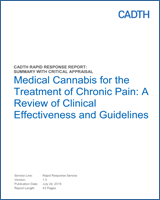The objective was clearly stated MEDLINE was searched from 1946 to April 2017, and the Cochrane Library was searched in 2017 were searched until April 2015, starting 1946 for MEDLINE and 1974 for EMBASE. Also, reference list of the included studies and the authors’ personal collections were searched. Study selection was described, and a flow chart was presented A list of included studies was provided A list of excluded studies was provided Article selection was done independently by two reviewers Data extraction was done independently by two reviewers Quality assessment was conducted independently by two reviewers using the modified version of AMSTAR (6 criteria were considered instead of 11, scores ranged between 0 and 6, with higher scores indicating better quality; scores ranged between 4 and 6 for >50% of the SRs) Characteristics of the included systematic reviews were presented Publication bias was explored using Funnel plots. However, presence of bias could not be ascertained definitely as systematic reviews for both cancer and non-cancer pain were considered. Mata-analyses were conducted It was mentioned that there were on conflicts of interest and the project received no external funding
|
|
| Hauser,12 2018, Germany |
|---|
The objective was clearly stated The Cochrane database of SRs, database of abstracts and of reviews and effects (DARE), and PubMed were searched. Also, reference lists of the included systematic reviews were searched and pain medicine experts were contacted. Study selection was described, and a flow chart was presented A list of included studies was provided Article selection was done independently by two reviewers Data extraction was done independently by two reviewers Quality assessment was conducted independently by two reviewers using AMSTAR, and it was reported that 4 SRs were of high quality and the remaining 6 SRs were of moderate quality Characteristics of the included systematic reviews were presented Mata-analyses were not conducted as the objective was to conduct a qualitative systematic review
| A list of excluded studies was not provided Publication bias does not appear to have been examined Conflicts of interest were Two of the three authors were associated with pharmaceutical companies. No funding was received for the current SR
|
| Nielsen,14 2018, Australia |
|---|
The objective was clearly stated Eight databases were searched (Medline, Medline In-Process & Other Non-indexed citations/Ovi, Embase/Ovid, PsycINFO/Ovid, EBM reviews- Cochrane Central Register of Controlled Trials/Ovid from 1980 to 2016 end. Study selection was described, and a flow chart was presented A list of included studies was provided A list of excluded studies was provided Article selection was done independently by two reviewers Data extraction was done independently by two reviewers Quality assessment was conducted independently by two reviewers using AMSTAR. AMSTAR score (0 to 11, higher scores indicating better quality) for the included SRs ranged from 2 to 10. Characteristics of the included systematic reviews were presented
| Publication bias does not appear to have been examined Meta-analyses were not conducted Conflicts of interest were declared. Three authors had association with pharmaceutical companies and the remaining four authors had no conflicts of interest
|
| Hauser,13 2017, Germany |
|---|
The objective was clearly stated The Cochrane database of SRs, database of abstracts and of reviews and effects (DARE), and Medline were searched January 2009 to January 2017. Also, reference lists of the included systematic reviews were searched, and experts in pain medicine or palliative care were contacted to identify further SRs and long-term studies. Study selection was described, and a flow chart was presented A list of included studies was provided Data extraction was done independently by two reviewers Quality assessment was conducted using AMSTAR AMSTAR score (0 to 11, higher scores indicating better quality) for the included SRs ranged from 7 to 10 (3 SRs had scores of 9 or 10, and the remaining 8 SRs had scores 7 or 8). Characteristics of the included systematic reviews were presented It was mentioned that the authors had no conflicts of interest.
| Unclear if article selection was done in duplicate Unclear if quality assessment was done in duplicate List of excluded studies was not provided Publication bias does not appear to have been examined Meta-analyses were not conducted
|
| Systematic review of Guidelines |
|---|
| Deng,8 2016, China |
|---|
The objective was clearly stated Multiple databases (MEDLINE, EMBASE, the National Guideline Clearing House, the Guideline International Network. And Canadian Medical Association Infobase) were searched (search period not specified). In addition, websites of related associations, institutes, societies, and communities were searched. Also, reference list of relevant articles were searched. Study selection was described, and a flow chart was presented A list of included studies was provided Article selection was done by two experienced reviewers; unclear if done independently Quality assessment of the included guidelines was done using AGREEII; unclear if done in duplicate. For the 6 domains: “Scope and Purpose”, “Stakeholder Involvement” “Rigor of Development”, “Clarity of Presentation”, “Applicability” and “Editorial Independence” the respective scores were 85%, 91%, 88%, 91%, 35%, and 60% for the CPG from NICE (UK); 78%, 33%, 48%, 91%, 0% and 93% for the CPG from IASP (international); and 76%, 35%, 38%, 52%, 33%, and 0% for the CPG from Latin America. Characteristics of the included studies were presented, but details were lacking. Meta-analysis not feasible, as guideline recommendations The authors mentioned that there were no conflicts of interest.
| A list of excluded studies was not provided Unclear if data extraction was done in duplicate Publication bias does not appear to have been examined
|
